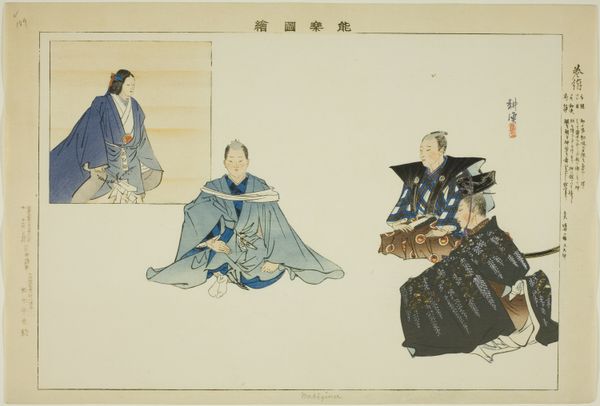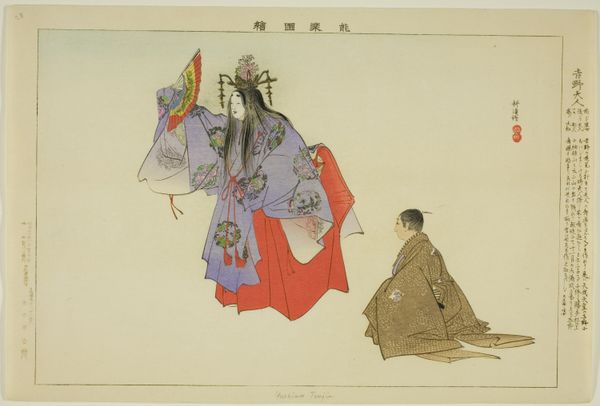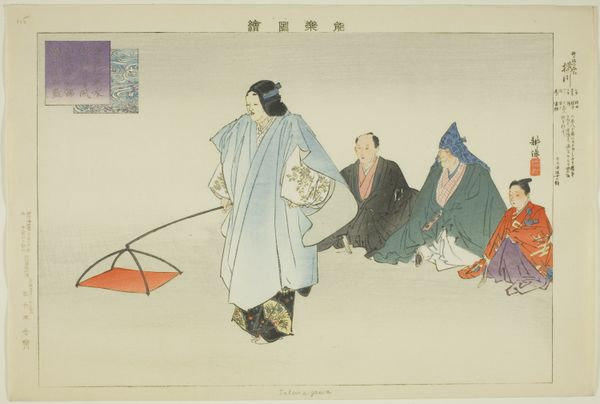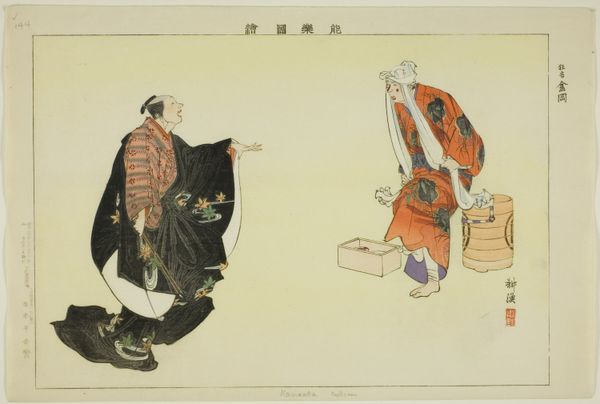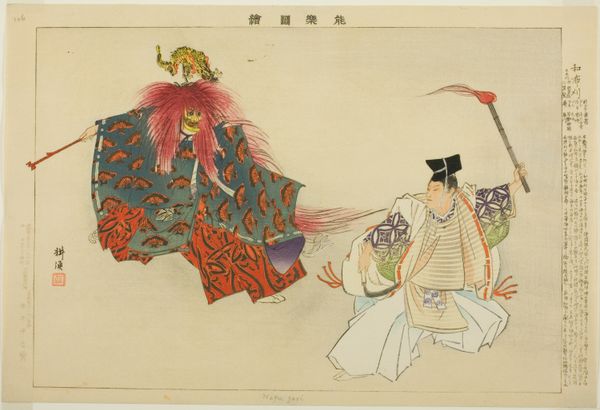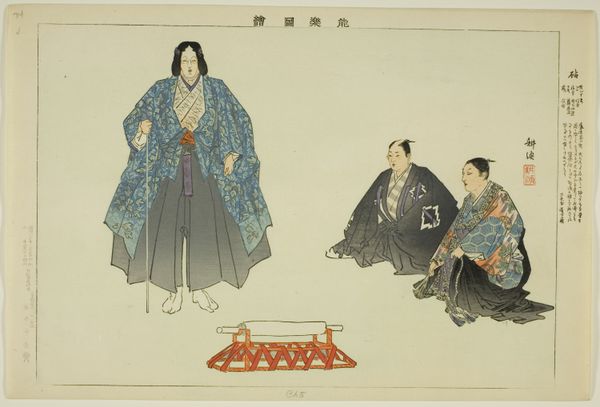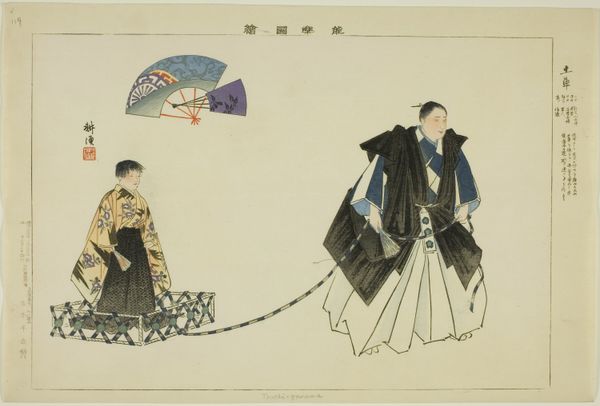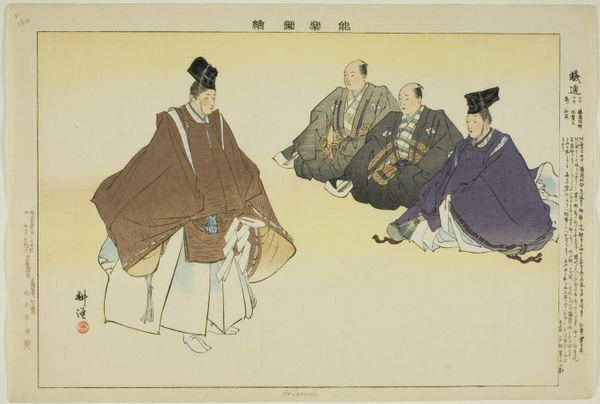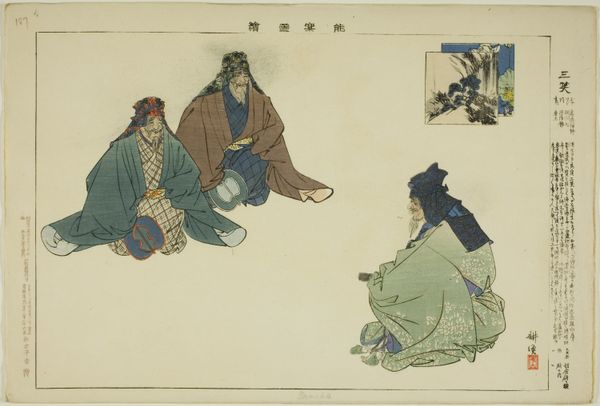
Mataiyama Kapami (Matsuyama-kagami?), from the series "Pictures of No Performances (Nogaku Zue)" 1898
0:00
0:00
Dimensions: Approx. 25.2 × 37.4 cm (10 × 14 4/3 in.)
Copyright: Public Domain
Curator: Our next stop features "Mataiyama Kapami," a woodblock print crafted in 1898 by Tsukioka Kōgyo, now residing at The Art Institute of Chicago. Editor: The muted color palette immediately sets a somber, almost reverent mood. The composition feels quite deliberate, stark even. Curator: Indeed. Kōgyo masterfully arranges the figures within the picture plane. Note how the negative space amplifies the details of their garments. Semiotically, each element—the folds, the colors—carries considerable visual weight, directing the viewer’s gaze. Editor: I'm struck by the symbolic weight of the mirror. In Japanese culture, mirrors have deep connections to self-reflection, truth, and even spiritual realms. Does this figure, with his almost mournful expression, symbolize a moment of profound introspection? Curator: A compelling reading. And notice how the flatness of the figures contrasts with the subtle gradations of color in the clothing. This is characteristic of the ukiyo-e tradition. Editor: Ukiyo-e's engagement with transience resonates here. It’s more than just aesthetic style, it communicates core cultural values tied to impermanence. This whole scene feels so deliberately constructed, so deeply embedded in tradition. It is like peering into a specific moment laden with cultural significance. Curator: The arrangement creates this sense of symbolic depth by creating this dialogue between flatness and dimensionality. Editor: This single sheet encapsulates an entire universe of visual and cultural understanding. What appears to be a scene of simplicity at first glance holds layers upon layers of interpretation. Curator: Exactly. Through careful observation and semiotic decoding, we begin to unravel the complexities woven into the work. Editor: This work urges us to acknowledge the layered tapestry of culture, memory and visual coding embedded in even the simplest of forms.
Comments
No comments
Be the first to comment and join the conversation on the ultimate creative platform.
